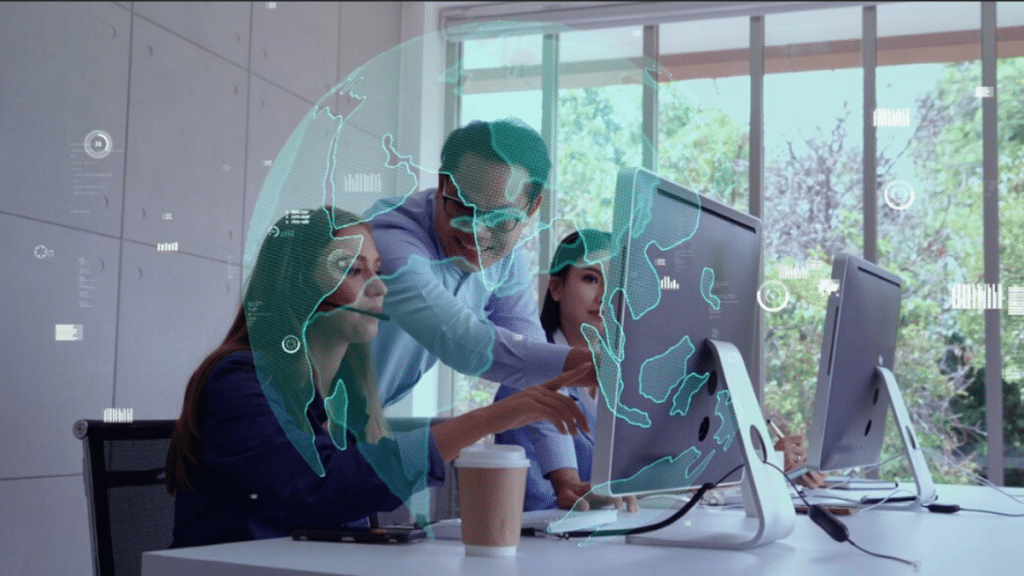Here are 9 current workplace trends that are going to shape how we work this year and into the future, as researched in Garter’s ‘Future of Work Trends for 2024’ report.
This yearly list of trends for the future of work is meant to help you deal with problems and seize opportunities this year and in the years to come.When you set strategy goals for your workforce, talent, and technology, you should be aware of, analyse, and rank the trends.
Right now, companies and business leaders have to deal with a number of problems that affect how we work.Each of the trends is important for dealing with talent problems and fits into one of four themes: handling the change in the employee value proposition (EVP), giving managers more useful skills, changing ideas about careers, and testing and using AI.
Hybrid Work and Employee Expectations
Since the end of the outbreak, people have been wondering, “Will we go back to work and do the same work we did in 2019?” Or will the big experiment in working from home around the world last?
According to the report, 60% of employees believe the cost of going to the workplace outweighs the reward. People also feel that it takes more effort to go into an office than it did pre-pandemic, and that it also feels more expensive. Employees are also claiming that the ‘return-to-work’ mandates favour employers vs favouring the needs and rights of workers.
Interestingly, however, the Garter report discovered that office requirements did not statistically significantly affect worker performance in a favourable or bad way.
In order to manage the costs of labour overheads from an office as well as the tangible and intangible costs of office fraternising, a suitable mix of hybrid and traditional office work seems to be preferable. Return to work planning may include increased focus on employee health and wellbeing, pre-employment medicals to ensure suitability to the role, and a hybrid arrangement that includes some remote work.
AI and the Workplace
Concerning AI and generative AI, the Garner survey revealed that 22% of employees are apprehensive and anticipate that their jobs will be automated away within five years. This is quite concerning and is generating considerable workplace anxiety.
In the near future, Garner anticipates that AI will not supplant many jobs, but rather prompt others to undergo redesigns to incorporate novel responsibilities and skill sets that leverage AI.
Furthermore, the report predicts that generative AI will be utilised in 70% of text and data-driven roles by 2025, an increase from its 10% share in 2023. This indicates that job roles that necessitate analysis and data are all benefiting significantly from the implementation of AI.
AI and HR
When it comes to AI and HR in an organisation, there are a lot of implications here.
For example, HR must now look at the role that generative AI has, including technical requirements, and assessments may now be unnecessary for open and upcoming roles. Rather, existing recruitments can be assessed against a new skill set. HR recruiting can be fairly costly; however, by having team members adapt and add AI talents in their skill set, HR may be able to recruit internally and save the business money.
4 Day Work Week
Now, how wonderful does a four-day work week sound? A few years ago, this was rather a novel idea, but more and more organisations are now really contemplating the work-life balance that comes from offering staff a four-day work week.
Studies demonstrate that a four-day workweek is popular among employees. Additional tests suggest gains for productivity and employee well-being by working four days instead of five. The notion is that by condensing the time we work, we’re more productive in the time that we’re there, and we also have more of a chance to recuperate on those three days off.
Climate Change Protections as Employee Benefits?
In terms of employee benefits, this is a particularly new one: climate change protection. What this means is that organisations may start to offer some sort of protection or an employee value proposition. Things like severe storms, extreme heat, wildfires, and poor air quality all have an impact on the workforce globally, so organisations are now emphasising climate change protections as part of their benefit offering.
This includes commitments to physical safety, offering shelter, energy, and provisions when natural disasters arrive, and helping out their local communities. It also includes compensation for impacted employees, so people who suffer hardship from an increasingly common climate-related event may receive subsidies for short-term housing relocation assistance or disaster relief. Additionally, mental health support is now available, with access to grief counsellors to help employees cope with the impacts of local climate change and the increased prevalence of disasters.
Now these particular benefits are not going to be suitable for every organisation, but rather global organisations are organisations working at the cutting edge of climate change policy and human interaction.

Summary
Garter’s ‘Future of Work Trends for 2024’ report identifies key workplace trends that will shape how we work this year and into the future. These trends are crucial for managing talent problems and setting strategy goals for workforce, talent, and technology.
Planning for these changes will make companies and workforces more agile into the future.
